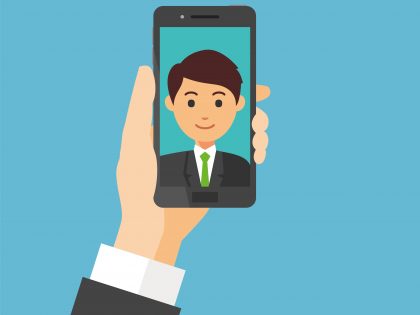
Facial recognition is quickly becoming standard on new smartphones, including the Samsung Galaxy S8 plus. And the future seems to look bright for this innovative technology. Case in point: Last year, the global market for facial recognition technology was worth $3.4 billion and is expected to swell to $7.8 billion by 2022.
Consumers are responding positively to this trend as well, with 30 percent saying they’re satisfied with the convenience of not having to manually type in a password, according to Daon. And when it comes to user authentication, experts predict 2018 will see the beginning of a long-term shift away from passwords to facial recognition and other biometric verification methods.
As facial recognition becomes more prevalent, it’s important for consumers to become educated about this technology. Here’s a look at how the technology is being used, some of the security risks associated with facial recognition and some best practices to follow when using biometric verification for identification purposes.
Facial Recognition Applications
Security is one of the biggest drivers behind the shift to facial recognition. For smartphone users, facial recognition represents a potential alternative to passwords, which can be difficult to remember but easily hacked or stolen. Meantime, security professionals are also using the technology to monitor transactions taking place at ATMs, airports and shopping malls.
But facial recognition has many other useful applications outside the realm of security. For one, health care providers use computer vision to track patient medication consumption and support pain management therapies, while marketers can use this technology to deliver customers personalized offers.
It’s also helping to save companies money. In fact, leading facial recognition provider Kairos saved an employer 10 percent annually after identifying a discrepancy between employees’ manual clock-in times versus those verified by biometrics.
Facial Recognition Security Risks
But like anything new on the tech front, facial recognition software currently faces some security limitations, which experts expect to be overcome quickly. For example, the odds of a random person being able to fool your smartphone into thinking their face is yours are about 1 in 50,000, depending on the type of facial recognition software being used.
However, someone who closely resembles you, including your children, may have the capability of unlocking the device, which has occurred in at least one verified case. To mitigate this risk, facial recognition designers are using machine learning to better distinguish a particular individual from an impersonator. Additionally, TrueFace.ai uses machine learning to distinguish photographs from real faces, while USAA’s facial recognition app requires users to blink their eyes, lowering the odds of hackers being able to obtain a photo of you.
Ironically, strengthening facial recognition software’s ability to distinguish you from other users creates the risk of locking out authorized users. In order to lower the risk of impersonation, newer software must use stronger criteria for recognizing valid users as well; after all, no one wants to be locked out of their own smartphone. Fortunately, machine learning can overcome this risk by learning the nuances of your face and expressions.
Facial Recognition Best Practices
In order for facial recognition software to identify legitimate users and exclude impersonators, Kairos recommends following some best practices when capturing images of someone’s face. For example, you’ll want to face the camera directly, filling the frame with your face and leaving a margin of one to two inches on the sides.
Additionally, avoid extreme angles and poses, and use a neutral facial expression. Keep your eyes open unless you’re using software that requires you to blink, and don’t wear dark glasses or tinted lenses. Finally, stay in focus and adjust the distance between you and the camera if your photo comes out blurry. Of course, don’t move while it attempts to capture your face.
As facial recognition becomes more mainstream, staying aware of the technology’s security risks and following best practices will help ensure you’re able to use it securely. As the technology improves, its security risks should decline, enabling you to enjoy the convenience and protection facial recognition affords users and companies alike.
![]()
